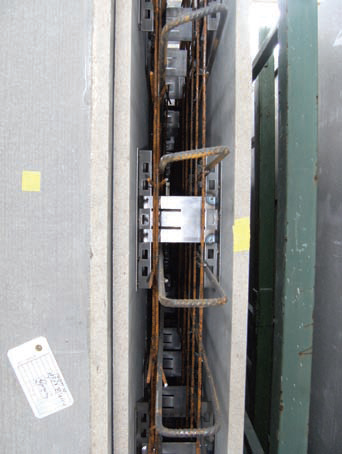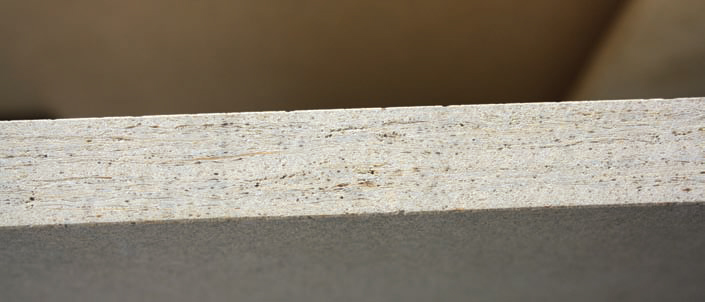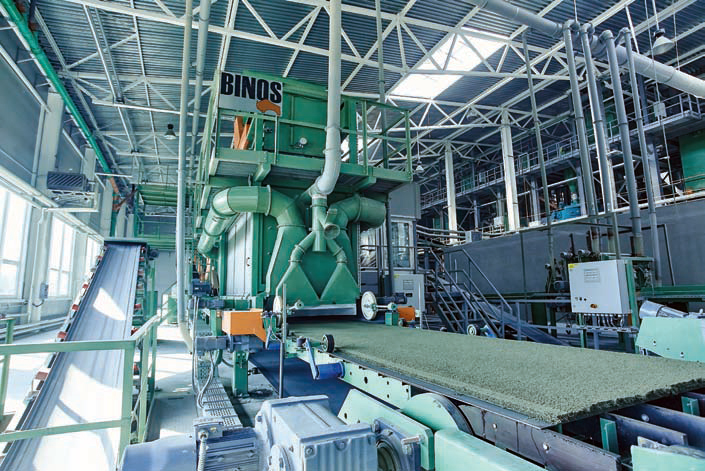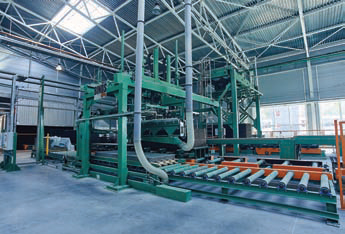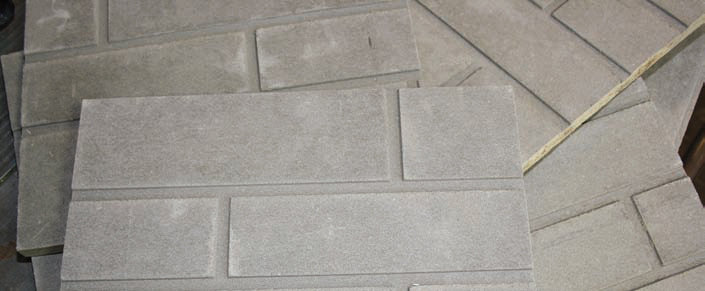Cementing bonds
16 March 2016Cement bonded particleboard is of particular interest for use in regions with high humidity, due to the fact that it is resistant to fungus, water and termites, while the production of the boards is environmentally friendly, says German machinery maker Binos.
Applications for cement bonded particleboard include interior and exterior panelling. Because of its variable surface, it can be used for facades or decorative aspects, as the production process allows the flexibility of producing semi-finished boards and customised products for immediate installation.
Due to its high stability and long-lasting resistance against weather and moisture, the board is often used for facades, prefabricated houses and wet rooms. Cement bonded particleboard (CBPB) can be as easily handled as wood based boards and does not require any special tools.
In general, cement bonded board consists of 60% cement, 20% wood and 20% water. The special benefit in utilising cement bonded particleboard is that it can also be processed like normal particleboard. Because of the same handling requirements, Binos Wind Forming can be integrated into a cement bonded particleboard plant to further increase value.
A ventilator regulates the air so exactly that the chips are separated by size automatically. Consequently, the surface and core layer are divided perfectly to achieve a higher panel quality and to reduce consumption of raw materials, says Binos.
This wind forming system is also usable in a standard particleboard production process. The configuration for particleboard plants is also enhanced by Binos' patented roller bed.
The company says it has revolutionised cement bonded particleboard, and its production processes, and has set higher standards and variety. The boards produced by its plants will support modern, rapid construction systems and meet the exceptional design demands of architects and builders, it says.
Binos adds that the production process was perfected with respect to reproducibility of the boards to achieve a constant high quality. Structured boards from 3 to 5mm thickness (other fibre cement products have standard 1.2mm), or painted with all kinds of patterns, can be produced and are adaptable to the desired target market.
In relation to standard particleboard, there is one main difference with cement bonded particleboard: the finished and installed cement bonded boards do not release pollutants into the environment over time; consequently it offers a more environmental friendly alternative to particleboards glued with formaldehyde, claims Binos, adding that this is true for the production process as well. In addition, the proportion of wood as a raw material is lower than in conventional particleboard.
The production process
The process for cement bonded particleboard is as follows: production starts with the conditioning of timber and cement. The peeled logs are fed into the cutter, where chips are produced for use in the panels. Cement is mixed with these wood chips and the material is taken into the pre-dosing bin. After that, the material is fed into the forming station.
Metal sheets need to be loaded for the press. Afterwards, the sheets need to be transported to the heated hardening chamber and are later unloaded. The production ends with storage time, when the board can achieve its final strength and the hardening process continues.
The flexibility in producing various board thicknesses during the production process is guaranteed, says Binos.
The company says it is offering the most modern cement bonded particleboard plants and solutions, with low energy consumption due to its cold-pressing system.
New plants, and upgrades of existing plants, are offered by Binos. With a traditional background, the company says it is looking back on over 50 years of history in producing complete plants for board manufacturing.
For some years, says Binos, it has been developing future-oriented technologies and the most beneficial solutions for increased value.
With its latest project in Belarus, Binos says it has proved its expertise in this special area, having supplied the main components for the production of cement bonded particleboard.
This included loading and unloading stations for the board stacks, a cleaning device for the sheet metal used in pressing, a release-agent application device and a forming station for securing the best dosage of surface and core layer. This, and much more, was supplied to the customer, Belzarubezhstroy (BZS).
During the project, an obsolete cement bonded particleboard plant was upgraded to the most modern specification. Individual machines were replaced and state-of-the-art technology was integrated. Diverse board thicknesses, from 8 to 40mm, can be achieved with a high accuracy and a gross density of just 1,250kg/m3, says Binos.
Plant modernisations can be especially interesting to companies that want to enter a new market sector with manageable investment risks. Binos says it offers installations from scratch and supports its customers during the whole process, from planning to final production.
Binos' plants are available in a range of daily capacities from 25m3 to 50, 100 and 200m3. The board thickness is also variable since 8 to 40mm can be produced, depending on the application. A Binos cement bonded particleboard plant allows the production of diverse board sizes and faces, says the company, while its high density, fine surface and closed edges means it is easily surface treated and has excellent physical properties.
The Binos product range
As well as its focus on the production of cement bonded particleboard, Binos says it is also a supplier of optimised forming solutions - for particleboard and other board plants.
Binos says that its Ultra Former combines the benefits of the company's Spike Roll and Vacuum Forming System and is well accepted by the market. It claims an excellent distribution over width and creates an homogenous surface weight, which gives a more even density and thickness in the boards produced. This solution is a well-established technique, with high accuracy and much better than other mechanical distribution systems, according to Binos. It says that the advantages speak for themselves: best density distribution, reduction of glue spots, minimal thickness tolerances and fully automatic operation, with online measurement systems.
Binos adds that another of its special machines is the Binos Fibre Turbine which can be used as a stand-alone or integrated system, located directly after the Ultra Former. The Fibre Turbine dissolves agglomerated fibres to produce an homogenised flow of single fibres to increase the quality of further processes. It can also be used to mix different kinds of fibres to form an homogenous fibre mat. The Fibre Turbines are available from 0.5 tons per hour (tph) to 60tph.
Binos says it is active in global markets and develops, plans, manufactures and puts into operation machine components, single machines and complete turnkey manufacturing plants for the resin and mineral bonded panel industry.
The company says its core competencies are complete plants, optimisation of single machines and the supply of service and components for the production of particleboard, MDF/HDF, OSB/OPB (oriented particleboard) and cement bonded particleboard. It says its strength lies in the areas of technology, development, automation and support, including installation, commissioning and training of the customer's personnel.
The Binos company was founded in 1999 as the successor company to Bison and has focused its attention on the manufacture of high-performance machines. It currently employs more than 80 specialists at its premises in Springe, near Hannover, Germany.
The company has a technology background which goes back to the 1950s, when Ernst Greten senior - grandfather of the current ceo of Binos, Tom Greten - developed the company's first particleboard plant in Springe, Germany.
